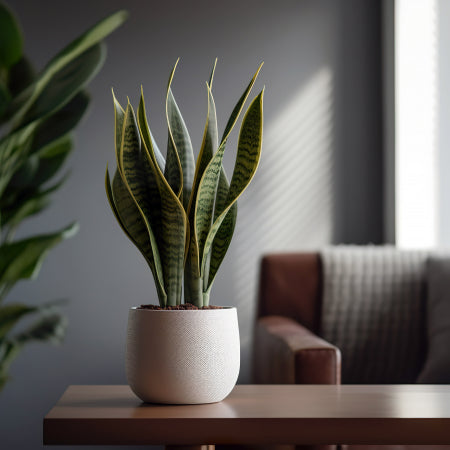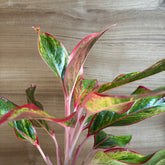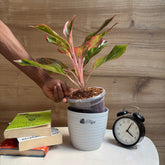Pink Syngonium Care Guide
Pink Syngonium, known for its beautiful pink-hued leaves, is a popular choice for plant enthusiasts who want to add a touch of color to their indoor gardens. This guide will cover everything you need to know to care for your Pink Syngonium and keep it thriving.
Pink Syngonium
| Feature | Details |
|---|---|
| Scientific Name | Syngonium podophyllum ‘Pink’ |
| Common Names | Pink Arrowhead Plant, Pink Goosefoot |
| Plant Type | Perennial, evergreen |
| Mature Size | 12-24 inches tall, 6-12 inches wide |
| Light Requirements | Bright, indirect light |
| Watering Needs | Moderate, keep soil moist but not soggy |
Light Requirements
Pink Syngonium thrives in bright, indirect light. While it can tolerate lower light levels, the pink coloration may fade if the plant does not receive enough light.
| Light Level | Effect on Plant |
|---|---|
| Bright, Indirect | Best for vibrant pink coloration |
| Low Light | Leaves may turn greener, and growth may slow down |
| Direct Sunlight | Can scorch the leaves and cause them to burn |
Watering
Keeping the soil consistently moist is key to maintaining a healthy Pink Syngonium. However, overwatering can lead to root rot, so it's important to find the right balance.
| Watering Frequency | Description |
|---|---|
| Once a week | During the growing season (spring and summer) |
| Every 2 weeks | In fall and winter when the plant's growth slows down |
| Watering Method | Water thoroughly until excess drains out, then allow the top inch of soil to dry before the next watering |
Humidity and Temperature
Pink Syngonium prefers high humidity and a warm environment, similar to its natural tropical habitat.
| Condition | Ideal Range |
|---|---|
| Humidity | 60-80% |
| Temperature | 60-80°F (16-27°C) |
| Avoid | Cold drafts, sudden temperature changes |
Soil Requirements
The right soil mix ensures good drainage while retaining enough moisture for the plant’s roots. A well-draining potting mix with organic material works best.
| Soil Component | Purpose |
|---|---|
| Peat Moss | Retains moisture while providing aeration |
| Perlite | Improves drainage and prevents soil compaction |
| Organic Matter | Provides essential nutrients and supports healthy growth |
Fertilizing
Feeding your Pink Syngonium with a balanced fertilizer helps maintain its vibrant color and supports growth.
| Fertilizer Type | Frequency |
|---|---|
| Balanced Liquid Fertilizer | Every 4-6 weeks during the growing season (spring and summer) |
| Organic Fertilizer | Every 2-3 months for a more natural option |
Pruning and Repotting
Regular pruning helps maintain the shape and size of your Pink Syngonium, while repotting provides the plant with fresh soil and room to grow.
| Task | When to Do It |
|---|---|
| Pruning | As needed to remove dead or yellowing leaves, and to control size |
| Repotting | Every 1-2 years, or when the plant outgrows its pot |
Common Problems and Solutions
Even with the best care, Pink Syngonium can sometimes face issues. Here’s how to address common problems:
| Problem | Symptoms | Solution |
|---|---|---|
| Yellowing Leaves | Overwatering or underwatering | Adjust watering schedule |
| Brown Leaf Tips | Low humidity or underwatering | Increase humidity and check watering |
| Faded Color | Insufficient light | Move to a brighter location |
| Pest Infestation | Presence of aphids, spider mites | Use insecticidal soap or neem oil |
Caring for a Pink Syngonium is relatively easy, making it a perfect plant for both beginners and experienced gardeners. By providing the right light, water, humidity, and soil, your Pink Syngonium will flourish, adding a splash of color to your home. With regular care and attention, you can enjoy the vibrant beauty of this plant for years to come. Any queries Littlejungle is always there for your help.







